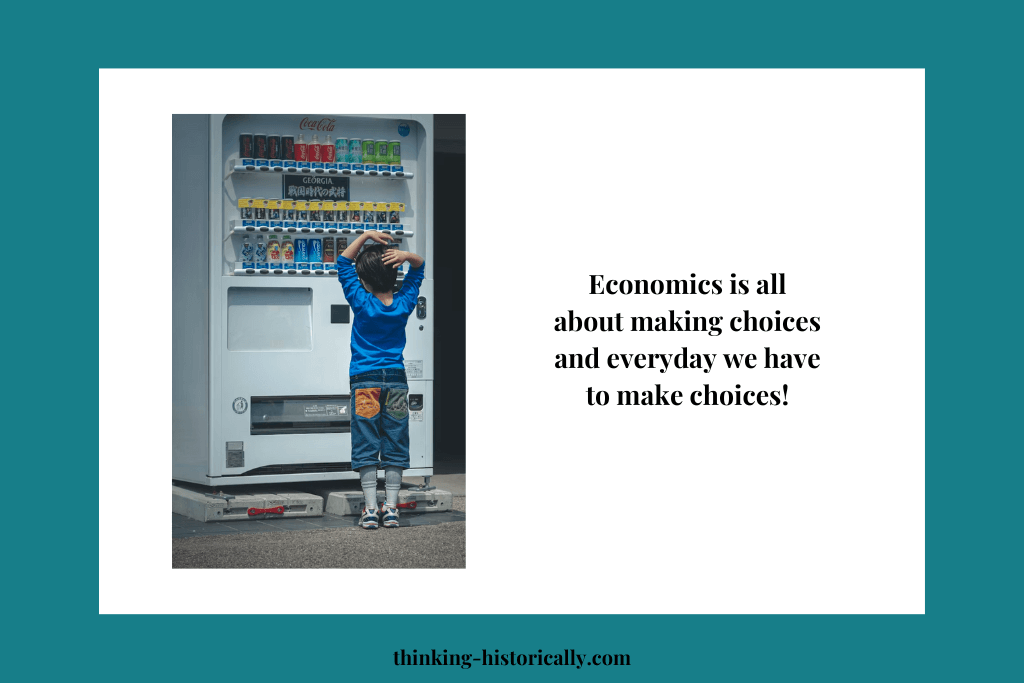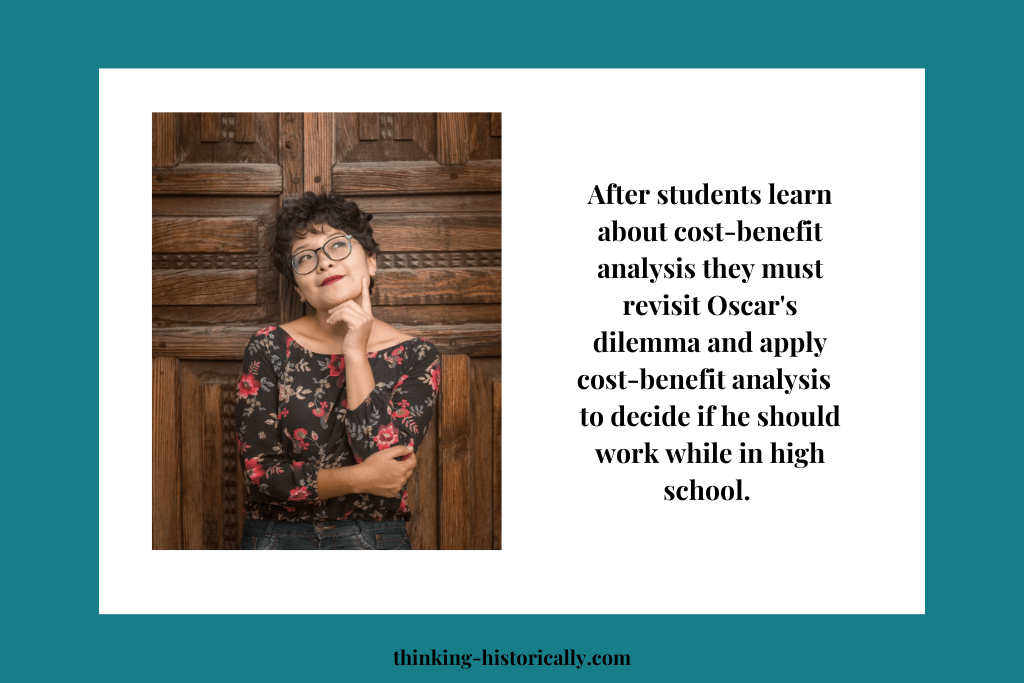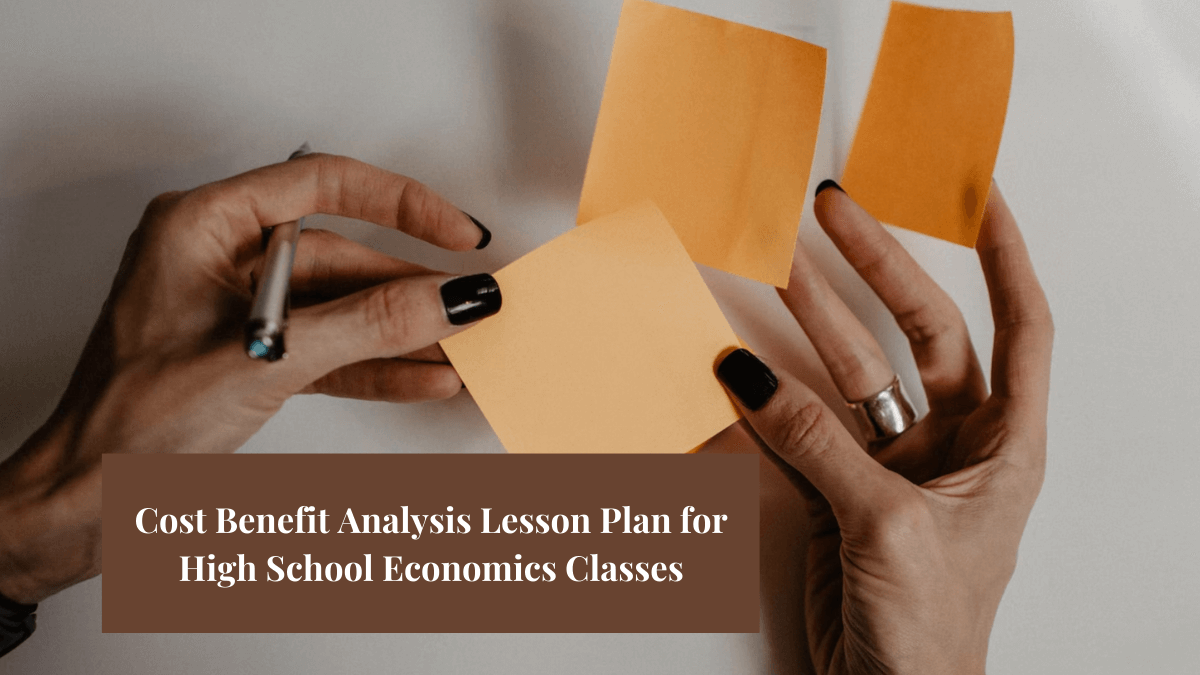As a high school economics teacher, you might be dreading your next economics class. I totally get it. When I first started teaching economics, I hated it and had no clue how to make economics interesting for my high school seniors.
Most of the time, new teachers to the profession are thrown into economics without much knowledge or familiarity with the content (that was my experience, at least!). I honestly had no idea what I was doing my first year (first few years, actually) as an economics teacher.
The question that kept popping into my head was, how do I make this interesting? Not only for my students, but for myself. I wanted to feel more confident as an economics teacher and I also wanted my students to enjoy my class.
Make Economics Relevant!
Fortunately, there is a way to make economics class fun and relevant! You see, when you break down economics, economic terms are actually concepts that we use in our everyday life. Economics is all about making choices and everyday we have to make choices!

An economics term that you can easily relate to student lives is cost-benefit analysis. This term may scare students when they first hear it, but it is actually something students do every single day. I’ll walk you through a cost-benefit analysis lesson that I used with my students!
Before we get into, what is cost benefit analysis and how does cost benefit analysis help make decisions? In its simplest terms, cost benefits analysis is when you weigh the costs (cons) against the benefits (pros) to make a choice.
For this cost-benefit analysis lesson plan, students are given a scenario in which a fictional student has to decide if he should work during his junior year of school. This scenario is great because many high school students wrestle with the question of working or not themselves!
Cost Benefit Analysis Buy-In
To get students interested in the lesson from the very beginning, it is important to have a hook! For this cost benefit analysis lesson, I used the following warm up to grab my student’s attention. The scenario that I gave my students was about a junior in high school named Oscar. Here is warm-up and some background information on Oscar:
Oscar is taking 4 AP classes and is also the captain of the speech and debate team. He wants to make his college application competitive so that he can go to his dream school, Stanford. However, Oscar faces a dilemma. He could get a job and earn $200 a week, but that would mean he has to work 3 hours during the week and 8 hours on Saturday. What should Oscar do?

This is a great warm up because it gets students thinking about the advantages and disadvantages of working. Students are using cost benefit analysis basics without even knowing it!
Economic Terms

Next, I go over the terms trade-off and opportunity cost. These terms are important because students need to be able to identify the trade-off and opportunity cost when they make decisions. The definition that I give students for trade-off is: “A trade off is the option you give up when given a choice between two.”
To help students better understand this concept, I give students various examples of trade-offs. One example I use is, “I went to the movies instead of studying for my test.” Since I chose the movies, the trade-off was studying for a test.
For opportunity cost, the definition I gave students is: “An opportunity cost is the cost of making one choice over another.”
The example of opportunity cost I use is, “I went to the movies instead of studying for my test.” The opportunity cost is that since I didn’t study for my test, I might get a bad grade.
After going over these terms, you can give students the chance to make their own examples of trade-offs and opportunity costs. I go over about 3-4 examples. For students to really understand these concepts, they need to see multiple examples.
Cost-benefit Analysis Term
Next, I go over the definition of cost-benefit analysis. The definition I give students is:
“A cost-benefit analysis is a way of comparing the benefits of an action to the expected costs. Cost-benefit analysis can be used to evaluate a single course of action or to make a choice between two alternatives.”
To apply their understanding of cost-benefit analysis students are asked the question, “Should you go to a Dodger game TONIGHT?”
After posing this question, students are given time to identify the benefits of going to a night game tonight and the costs of going to a night game tonight. After identifying the benefits and costs students must decide if they will go to the game. Is it worth it for them to go?
Allow students about 5-10 minutes to work on this scenario. You may even have students share out the responses with the whole class.
Exit slip

Finally, for the exit slip students revisit the scenario they were given at the beginning of the lesson regarding Oscar. However, for their exit slip they must identify all the benefits and opportunity costs if Oscar decides to work during his junior year.
After identifying all the benefits and costs students must explain the choice Oscar should make.
Through this lesson, students are able to understand what cost-benefit analysis is used for and how it plays out in everyday life. This was a fun lesson. If you’re interested in purchasing the lesson, you can view it here.
My cost benefit analysis lesson includes complete lesson plan procedures and ready to use student handouts and powerpoint presentation! This lesson is also a part of the Unit 1 Introduction to Economics Basic Concepts Lessons Bundle! Feel free to check it out.


